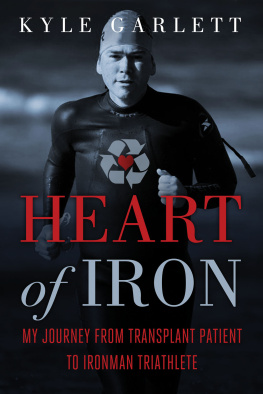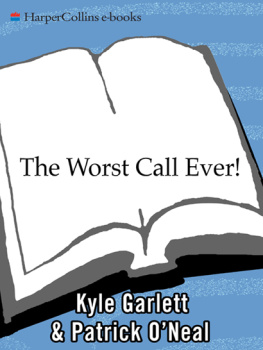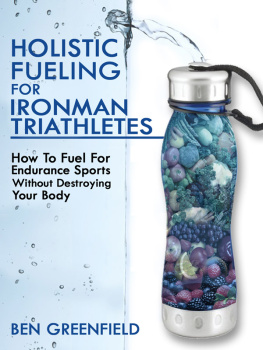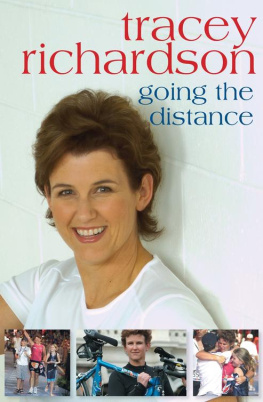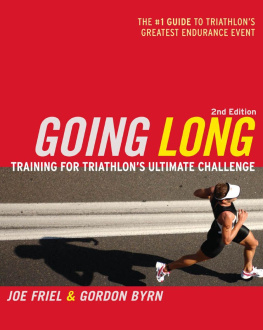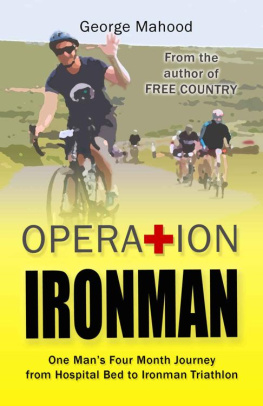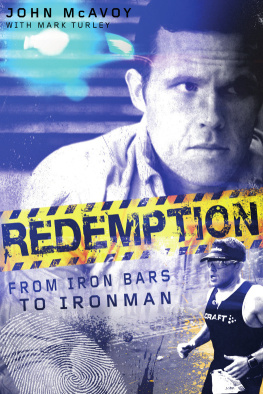$24.95 (CAN $27.95)
A T AGE EIGHTEEN , when his classmates were enjoying a carefree summer before senior year, Kyle Garlett was diagnosed with Hodgkins disease. By the time he was thirty-five, Kyle had soldiered through three more cancer diagnoses, a bone marrow transplant, a hip replacement, and a heart transplant. These incredible health challenges would have stopped a less determined man, but Kyles devotion to survival and his ability to make the most of his chances kept him going.
In Heart of Iron, he tells his amazing life story with clear-headed optimism and a winning sense of humor, from his first diagnosis of lymphoma as a teenager and through the years of chemotherapy that destroyed his joints and weakened his heart. After five and a half years on the organ-transplant waiting list, Kyle received a new heart and embarked on a challenge of his own making: training for an Ironman triathlon. When asked why he competed in not one but two Ironman triathlons, he said, Because I can. Kyle recounts his miraculous recovery from seemingly insurmountable health hurdles, along with the story of how he became an Olympic torchbearer, a devoted Leukemia & Lym-phoma Society spokesperson, a motivational speaker, and an author.
Focusing on not only Kyles health crises but also his career as a sportswriter and the amazing friends and family who supported him, Heart of Iron is an invaluable companion for those affected by cancer and a breathtaking memoir about one mans unstoppable spirit and quest for success against all odds.


Library of Congress Cataloging-in-Publication Data
Garlett, Kyle.
Heart of iron: my journey from transplant patient to ironman triathlete / Kyle Garlett.
p. cm.
Summary: Throughout his life, there was nothing Kyle Garlett hated more than losing, and he knew early on that four diagnoses of cancer could not match his spirit of competition. His appetite for victory and success and his love of life pushed him past his health hurdles-including a bone marrow transplant, hip replacement, and a heart transplant-and into the greatest challenge of his life: the Ironman Triathlon World Championship. Kyle tells his amazing life story, beginning with his diagnosis of lymphoma and continuing through years of chemotherapy that destroyed his joints and weakened his heart, leading up to his journey to the Ironman Triathlon, in which he competed not once but twice. His miraculous recovery and athleticism are recounted, along with his becoming an Olympic torch bearer, a Leukemia and Lymphoma Society spokesperson, and a motivational speakerProvided by publisher.
ISBN 978-1-61374-005-7 (hardback)
1. Garlett, Kyle. 2. Track and field athletesUnited StatesBiography. 3. CancerPatientsUnited StatesBiography. 4. HeartTransplantationPatientsUnited StatesBiography. 5. Ironman triathlonsUnited States. I. Title.
GV697.G37G37 2011 796.42092dc23
[B]
2011019704
Interior design: Jonathan Hahn
All interior images from the authors collection unless otherwise noted.
Copyright 2011 by Kyle Garlett All rights reserved First edition
Published by Chicago Review Press, Incorporated 814 North Franklin Street Chicago, Illinois 60610
ISBN 978-1-61374-005-7
Printed in the United States of America
5 4 3 2 1
For my wife, Carrie, the bravest woman
I know For my parents, who taught me how to love life
For my doctors and nurses, who gave me that life to love
For all newly diagnosed cancer patients, please believe
For everyone waiting for an organ, your call will come
For all organ donors and their families,
Thank you hardly scratches the surface
CONTENTS
PROLOGUE
OCTOBER 10, 2009
It was the moment I was dreading most: just floating, waiting, anticipating.
I really had no idea what to expect from myself in those last few minutes of countdown. How does anyone know? How does anyone truly prepare for a moment like this?
The moments and minutes to follow, sure. That path was mostly set. You could spend a small fortune and fill a small library buying all the books that tell you how to prepare for the day that follows. But the final minutes that ticked toward 7 AM remained an individualized agonizing mystery.
Which is why I was so surprised to find myself treading water, unexpectedly calm and relaxed. Instead of the churning stomach and racing mind that I had anticipated, I was actually enjoying the moment. The water was warm and clear and beautiful. Kailua-Kona Bay is thousands of miles from the place where Ferdinand Magellan first gazed upon the worlds largest ocean, bestowing upon it the Latin name Mare Pacificum. But on this morning, in this very special place where the earth is still being made anew by active lava flows on Kilauea, the Pacific was indeed a peaceful sea.
The morning sun dazzled, breaking over Mauna Loa and illuminating the shifting kaleidoscope of colors dotting the ocean floor. The crowd, numbering beyond twenty thousand, was spirited and enthusiastic. Regardless of personal acquaintance, your days mission was theirs. Simply put, the energy of the moment was transcendent and sublime, and I could have floated in it forever.
But then, with a cannon shot marking the start of the seven oclock hour, we were off headlong into the boil of thrashing arms and kicking legs.
Ive heard it said that the start of an Ironman triathlon is like swimming inside a washing machine set on heavy duty. Its the full-contact portion of the sport, and its no stranger to the occasional busted nose or blackened eye. When nearly two thousand people are all trying to swim along the same buoy-directed path, there isnt often a more expedient avenue to get around slower swimmers than to go right over them. And that quite often leads to a stiff kick to the face. Its no way to start a 2.4-mile swim or an entire day that will require you to cover 140.6 self-powered miles by the stroke of midnight.
As one of those slower swimmers and as someone who didnt feel the need to taste his own blood to begin the longest day of his life, I seeded myself appropriately. My pre-cannon-fire float was done on the fringes of the main pack, safely away from the soon-to-be-exploding ocean.
This was, of course, a race. And the shortest and quickest distance between two points has always been a straight line. So by strategically choosing discretion over definitude, I was adding a minute or more to my swim time. But a 2.4-mile swim was already going to take me close to two hours. What was a handful of seconds really going to matter?
As we began the swim, the remaining prerace jitters quickly transferred into powering kinetic energy, and I felt great. I settled into the solid rhythm of my training, a good pace and breathing pattern that would take me 1.2 miles out to sea, then back.
In the water or out, I will never be mistaken for Michael Phelps. Or, for that matter, someone who swam competitively for his high school junior-varsity team. I am five foot eight on my particularly tall days and barrel chested with a matching set of hips. While the long and lean swimmers cut through the water like an Americas Cup racing yacht, I look like the tugboat sent to retrieve those yachts if they ever snap a mast.
Dont get me wrong. A tugboat is plenty seaworthy and more than capable of swimming 2.4 miles. Its just not very efficient or aesthetically pleasing when doing so. And it will never become a model for those looking to illustrate the perfect gliding swim stroke.
Next page
